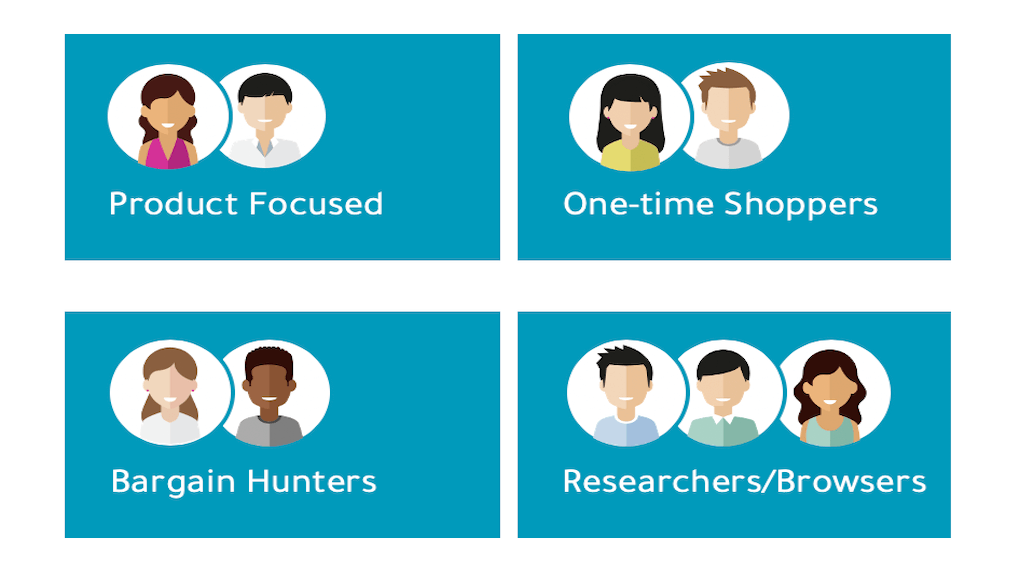Creating an eCommerce website has never been so important. The current scenario has shown us that owning an online store is essential to success. It allows users to receive their products and services at the comfort of their homes, while keeping your business up and running.
According to Shopify, even though eCommerce is still a relatively small piece of the pie, it’s growing faster than in-store sales. “Worldwide eCommerce sales increase of approximately 18% in 2019, compared to the year before, while retail growth has slowed considerably and is not expected to pick up through 2023”.
At Major Tom, we help businesses to cut through the noise and make an impact within their industry. This might involve creating your store from scratch or optimizing an existing store to drive more conversions or sales.
Regardless of which platform you decide to use, it’s important to create a great eCommerce user experience. To allow your online store to have a pleasant shopping experience for your customers. This article highlights the approach we take to support our clients — and ultimately their customers — when creating eCommerce stores. We also like to think of it as a short guide of things you can’t miss in the eCommerce user experience. Let’s begin!
Build team alignment
Ensuring your team is on the same page is an important step you can’t skip. An eCommerce project normally involves different areas of expertise, such as UX, UI, SEO, Data & Analytics, Development, and Marketing. Although the jobs are different, each person’s role ultimately works toward the same end result. The goal is to have a successful eCommerce user experience on the site. Everyone on your team should be aligned on what success looks like. This includes what their individual jobs are meant to accomplish to achieve that success.
Major Tom’s phased approach enables our team of strategists to create your eCommerce strategy collaboratively, ensuring that your goals are met.
Start with who you are designing for
Creating personas is a great way to address users’ context, motivations, needs, and approaches to use your store. This is a practice you can use to stay focused on solving your users’ problems. We often put ourselves in their shoes when making design decisions. This is done so we don’t end up creating a user experience for ourselves.
How can I start creating personas?
There are different ways to create your personas, and this will depend on the type of information and resources available. You can start mapping them based on existing research, or on your team’s expertise within the industry. Your assumptions about who your users are, what they think, feel, and do, are always valuable to create hypothesis. These insights can be further validated, and the output of this process can be qualitative or quantitative, depending on the methodology and sample used.
If you don’t have the time and resources to run a comprehensive study, it is ok. We suggest you to keep gathering information about your personas in order to optimize your approach. This should be an always evolving tool.
It’s important to note that no matter the depth of (new) research you have on your users, using personas in your design process is already a big differential. It will ensure alignment and purpose while designing the eCommerce user experience.
At Major Tom, we start developing personas in a workshop environment that involves key project stakeholders. Our goal is to create distinct segments to inform our decisions. Prioritizing your personas collectively is also advised.
Want to learn more about how we structure personas? Download Major Tom’s personas template that will help you empathize with your users.
 Additionally, noticing a lack of diverse representation in the avatars being used during persona development, our UX Strategist created avatars that have diverse skin tones and hairstyles. To help others represent diversity in their work, we’ve made our persona avatars freely available. You can download them below.
Additionally, noticing a lack of diverse representation in the avatars being used during persona development, our UX Strategist created avatars that have diverse skin tones and hairstyles. To help others represent diversity in their work, we’ve made our persona avatars freely available. You can download them below.

My personas are ready. What now?
Using personas can be challenging, however, this generally happens when they are not built properly. So, we wanted to emphasize that in order to be actionable, personas should be created around patterns that can be identified within your audience. This also avoids having multiple persona types that might not be as memorable.

That being said, here are some examples of how you can utilize personas to:
- Build pages that meet user expectations — both in terms of content and design.
- Create content and functionalities that communicate value and increase user motivation.
- Provide the right type/amount of information for them to make a purchase decision, and reduce friction — any doubts, hesitations, and uncertainties.
- Tell a story that doesn’t cause distraction and helps visitors to take action — this relates to the copy, visuals, functionality, and how these elements are organized on the page.
- Design an experience that is clear and simple to visitors — including cues and benefits that are able to mitigate their pain points throughout the process.
Make your products easy to find
Let’s face it: Creating an eCommerce website can be fairly simple if you have a small number of products. But things can easily get messy as soon as you start expanding the number of products you offer.
According to Baymard Institute, “product finding is key to any e-commerce business – after all, if your customers can’t find a product they can’t buy it.”
This means it doesn’t matter how much time you spend on a beautiful design and product images. The customer’s overall user experience will falter if foundational information architecture (IA) elements aren’t solid. Baymard Institute studies also highlight that:
“22% of major eCommerce sites lack intermediary category pages at the very top of their category hierarchy” and “54% of eCommerce sites suffer from over-categorization.”

An example of “Over Categorizing” – Note at how the “Point & Shoot Camera” category has incorrectly been implemented with the different “use types” as sub-categories – making it impossible to get a list of all point & shoot cameras.
In addition, we often notice sites that sub-utilize their filtering and sorting capabilities. This is done even though the majority of the eCommerce platforms offer built-in functionalities and a friendly set up. What you should be taking away from all of this is simple: think smart, but don’t overthink it. Giving your customers the user experience where there is a clear path to purchase will save them time and increase your sales.
When partnering with our clients, we strive to create not only a clear and intuitive store navigation, but also set a foundation for their eCommerce growth. And there are different techniques we can utilize to optimize your store navigation. An example is card sorting — a user research method used to evaluate or generate IA ideas.
If you include team alignment, personas, and an easy-to-find product in your eCommerce strategy, you’ve got a recipe for success. And, of course, if you prefer to partner with a tried-and-tested agency to create your eCommerce store, get in touch.